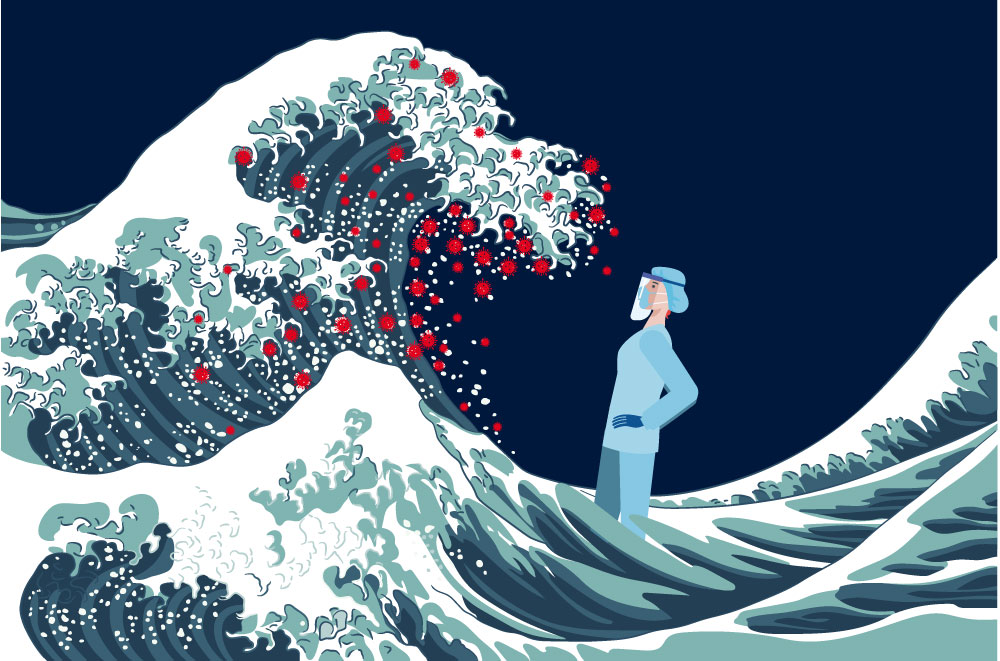RIO DE JANEIRO, BRAZIL – Several countries have now brought the coronavirus epidemic under control through tougher or gentler measures. This has allowed them to venture a return to the much longed-for normality with initial relaxation.
But it is precisely in countries like South Korea, where everything seemed to be under control, that new outbreaks are now occurring. The warnings of a second wave were thus well-founded.
How could the new outbreaks have developed? Are the so-called superspreaders – a few virus carriers that infect many other people – the driving force? Or are certain activities particularly contagious? And how are the new outbreaks countered?
Three case studies are set out below.

Germany
New coronavirus outbreaks are causing alarm in Germany. In Göttingen an entire high-rise complex is affected. Two large families had celebrated the end of Ramadan there. Distance rules were obviously disregarded, and at least 120 people were infected. Celebrations in a shisha bar also contributed to the spread.
The entire complex with over 600 residents is being tested since Friday, according to the authorities. Since there are many children and youths among the infected, the recently reopened schools, day-care centres and sports clubs had to close again.
In Bremerhaven, the critical mark of 50 new infections per 100,000 inhabitants within seven days was also exceeded by the end of the first week of June. There, dozens of faithful were infected in an unitarian chapel.
An emergency plan will be triggered from this limit onwards, which provides for tightening measures, including the closure of schools, restaurants and some retail stores.
Germany has managed to get through the coronavirus crisis relatively unscathed, thanks to early and extensive testing. There are only about 220 confirmed infections per 100,000 inhabitants, and deaths in particular, at 104 per million inhabitants, have been lower than initially feared.
As a result, many people feel that the epidemic has been overcome. “I feel uneasy when people believe that we no longer need the distancing rules, for example. We do need them,” said Chancellor Angela Merkel.
On the sunny weekend of Pentecost, over 400 rubber dinghies gathered in Berlin for a kind of party protest on the Spree River and the Landwehr Canal to demonstrate for the survival of the club scene. Masks or distancing were irrelevant for the approximately 3,000 participants. Whether the protest has resulted in a new source of infection remains to be seen in the next few days.
Israel
Israel reacted early, taking drastic measures to tackle the coronavirus and was successful. After a 40-day lockdown, the situation seemed to be under control. Two weeks ago, 17,000 people were infected and 290 died, while on some days there were only three new infections. Then the curve started to rise again.
On June 4th alone there were 118 new cases. Most affected were school children and teachers, after they switched back from distance learning to classrooms in mid-May. In a Jerusalem high school alone, over 100 children were infected. A teacher is thought to be the superspreader. He is said to have come to class although he felt sick.
Seventeen affected schools and kindergartens had to be closed throughout the country. Others switched back to distance learning as a precaution. Over 6,800 students and teachers are in quarantine. According to the Ministry of Education, there are currently 244 children infected in this area. Parliament also closed down this week because a deputy was infected.
Now there are complaints about a general carelessness caused by contradictory expert opinions. In addition, there was a week-long heat wave during which the wearing of masks was suspended. This could have been one step too many, among other factors.
Restaurants and cafés opened again in late May. Public buses are also running regularly again. The consensus is that three things in particular will be decisive in the future: Masks are mandatory, as are keeping a distance, and washing one’s hands. In order to prevent a new wave, people must tread carefully. Only in concrete cases will tougher measures be implemented again.
Japan
Fear of a second wave is also spreading in Japan. Particularly in Tokyo, but also to a lesser extent in the province of Fukuoka, there have been new infections in the past two weeks.
On June 2nd, the capital recorded 34 new confirmed cases. As Tokyo Governor Yuriko Koike told journalists, many of these cases are related to nightlife, mainly in the district of Shinjuku. There, visitors come into close contact with other people in closed, crowded rooms.
New cases this week also showed that Shinjuku has become a new hotspot. Most of the infected are younger people who work in the neighbourhood or who have gone out. Officials also speak of infections in hospitals.
In Greater Tokyo, new outbreaks have occurred in several hospitals. Both hospital staff and patients have become infected.
Governor Koike called on the population to be very cautious when visiting places like nightclubs. She does not intend to take more stringent measures for the time being. She was caught off guard and, at the start of the week, she announced a further relaxation of the containment measures.
Up until then Japan had successfully tackled the coronavirus. The country, with 127 million inhabitants, has just under 17,000 confirmed Covid-19 cases and slightly over 900 deaths. A mild state of emergency declared in early April was lifted by the state government only one and a half months later.
Prime Minister Shinzo Abe achieved this in an unconventional way: he rejected harsh curfews and an economic shutdown. Although schools were closed early and many companies introduced home offices, many stores and restaurants remained open.
At the same time, the crisis team focused on the rapid detection of virus outbreaks, tracing the source of infection and isolating everyone involved. This approach now needs to prove its worth.

